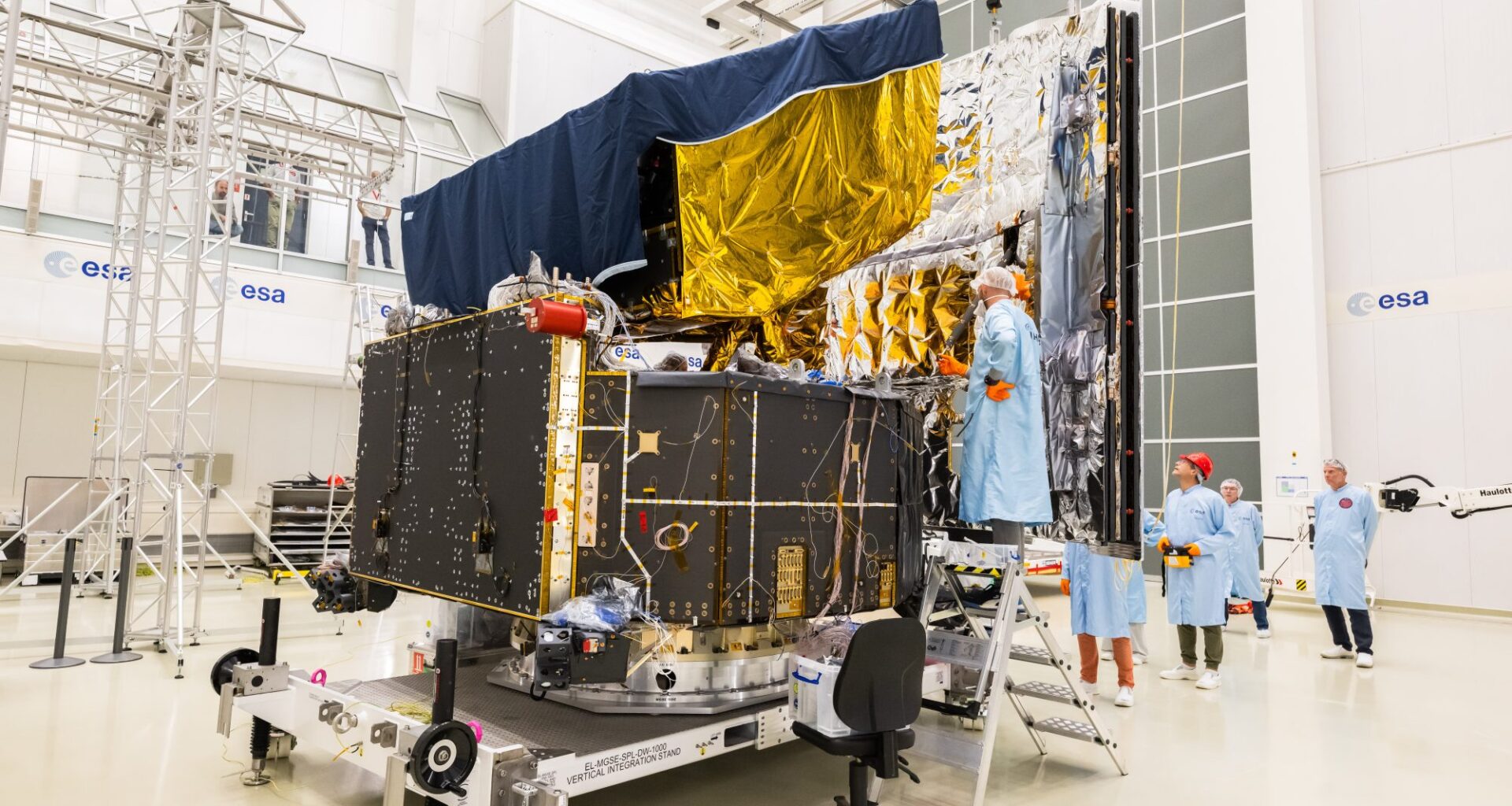The European Space Agency (ESA) has officially completed the construction of its latest deep-space observatory, Plato, marking a crucial step in its mission to discover Earth-like planets beyond our solar system.
The spacecraft, designed to detect and study rocky exoplanets orbiting Sun-like stars, recently had its final structural components – a combined sunshield and solar panel module – successfully installed.
Engineers carried out the precision assembly inside ESA’s Test Centre in the Netherlands. Suspended from a specialised rig, the module was delicately aligned and mounted onto the rear of the spacecraft.
This integration completes the physical build of Plato, placing it firmly on track for a series of rigorous environmental tests before its scheduled launch in December 2026.
A telescope tailored for Earth-like planets
Plato, short for PLAnetary Transits and Oscillations of stars, is a space telescope purpose-built to identify terrestrial exoplanets within the habitable zones of stars similar to our Sun.
These are the “just right” regions where conditions may support liquid water and possibly life.
To fulfil its mission, Plato is equipped with 26 advanced cameras capable of observing over 150,000 stars simultaneously.
These instruments will monitor minute dips in starlight caused by orbiting planets, a method known as the transit technique.
Each camera is engineered for high precision and is kept at cryogenic temperatures (around -80°C) to ensure peak performance.
This configuration makes Plato especially sensitive to detecting smaller, Earth-sized planets – a key goal in the ongoing search for potentially habitable worlds.
Powering science from deep space
The newly attached solar panels and sunshield are more than just structural additions.
Once in orbit, the sun-facing solar arrays will generate all the electricity needed to power Plato’s onboard systems, while the sunshield ensures that the sensitive optical instruments remain cool and in shadow.
The spacecraft’s solar panels will deploy after launch, unfolding like wings to maximise sunlight exposure. Engineers recently completed a successful deployment test, simulating weightless conditions using a pulley system.
The test confirmed not only mechanical functionality but also verified that the panels could generate sufficient power using a high-intensity lamp to simulate solar radiation.
This critical success confirms that Plato is structurally and electrically ready for the next phase.
Built by Europe, for the stars
Plato is the product of a major international collaboration. While ESA leads the mission, its scientific instruments have been developed in partnership with the Plato Mission Consortium, which includes research institutes, universities, and aerospace companies from across Europe.
The industrial assembly of the spacecraft was carried out by the Plato Core Team, led by German aerospace company OHB, with contributions from Thales Alenia Space and Beyond Gravity.
The partnership showcases the power of pan-European collaboration in tackling some of science’s biggest questions.
Next stop: Space simulation and stress testing
With construction complete, Plato must now prove its readiness for space through a series of intense qualification tests. Engineers will subject the spacecraft to acoustic and vibration tests that simulate the brutal conditions of a rocket launch.
Following this, Plato will be moved into Europe’s largest space environment simulator, a cryo-vacuum chamber designed to mimic the cold and airless vacuum of space.
These final trials will determine whether Plato can survive and thrive in the extreme environment it will encounter once it begins its cosmic hunt.
A new era in the search for Earth-like planets
Plato is scheduled to launch aboard an Ariane 6 rocket in late 2026. Once operational, it will be positioned at the second Lagrange point (L2), about 1.5 million kilometres from Earth.
From this vantage point, free from atmospheric interference, Plato will begin its years-long mission: scanning the galaxy for Earth-like planets that may, one day, transform our understanding of life in the Universe.
With its unique design, cutting-edge instruments, and the power of multinational collaboration, Plato is poised to usher in a new era of exoplanet discovery.
